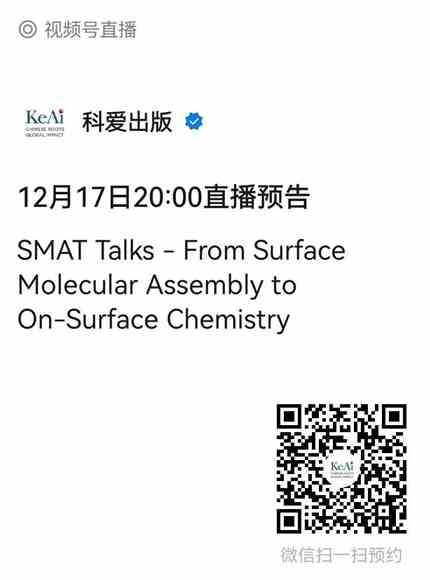SMAT Talks - From surface molecular assembly to on-surface chemistry
Published 15 December, 2021
Time:
Friday, 17 December, 20:00 - 22:00 Beijing time
Surface molecular self-assembly is an effective method to use relatively weak interactions such as hydrogen bonding, metal-ligand coordination and van der Waals forces, to form ordered molecular structures. Molecular assembly structures with the features of monolayer or sub-monolayer molecular thin films, have not only provided insight into intermolecular interaction forces, but also the possibility to adjust surface properties and functions. This research field has drawn wide attention and interest into control over the formation of covalent oligomers and polymers.
On-surface chemistry, also known as on-surface covalent reaction, has been a research focus of surface science owing to its characteristics of constructing covalently connected molecular structures. Most surface molecular covalency chemistry is conducted on surfaces of metal single crystals for the fabrication of macromolecules and polymers with precise, controllable and stable structures through intermolecular or intramolecular coupling reactions. The involved elementary reactions can be realised in traditional chemical synthesis, but the reaction pathways and products may be completely different from that in traditional reactions. The surfaces has inherent characteristics such as two-dimensional/one-dimensional spatial confinement, different adsorption sites, and thus has provided an important and unique avenue to the control over chemical selectivity, precise preparation of nanostructures.
Speaker:


Professor Lifeng Chi
Chinese Academy of Sciences, Soochow University, China
Lifeng Chi, is a professor at Soochow University in China and is an academician of the Chinese Academy of Sciences. She received her Bachelor’s degree in Physics (1982) and Master’s degree in Physical Chemistry (1985), both at Jilin University, China. Thereafter she obtained her PhD degree in Physical Chemistry in 1989 at the Max Planck Institute for Biophysical Chemistry/Göttingen University. In 2000, she finished her habilitation at the physics department, University of Münster and became a Professor at University of Münster in 2004. She was elected as academician of the Chinese Academy of Sciences in 2021 and a member of the Academy of Europe. She has been awarded several prestigious prizes, including: IUPAC Award for Distinguished Women in Chemistry/Chemical Engineering (2017), ACS Nano Lectureship Award (2016), Distinguished Overseas Chinese Young Scientist (1999) and Lisa-Meitner Scholarship (1997). She serves on the editorial/advisory boards of several international journals and as an associate editor of Chinese scientific journals, including Small, ACS Nano, ChemComm, Journal of Physical Chemistry Letters, Advances in Material Interfaces and ChemNanoMat. She has published more than 450 scientific papers in journals such as Nature, Science, Journal of American Chemical Society, Angewandte Chemie, Chem and Physical Review Letters.

